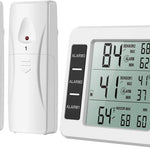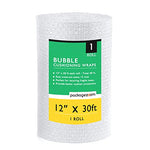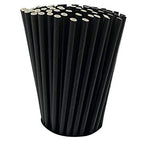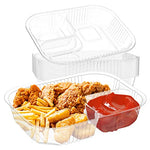You have no items in your shopping cart.
Embarking on the journey of composting in your backyard not only reduces waste but also enriches your soil, promotes healthier plant growth, and contributes to a sustainable environment. Whether you're a gardening enthusiast or someone looking to minimize their ecological footprint, starting a composting system in your backyard is a rewarding endeavor. In this guide, we'll walk you through the step-by-step process of setting up and maintaining a successful composting system, from choosing the right location to troubleshooting common issues.
Selecting the Ideal Spot for Your Compost Bin
Finding the perfect location for your compost bin is crucial for its success. Ideally, choose a level area with good drainage and partial shade. Avoid placing it too close to your house to prevent any potential odors.
Choosing the Right Compost Bin
Selecting the appropriate compost bin depends on various factors such as space availability, budget, and personal preferences. Options range from traditional bins to tumblers and vermiculture systems. Consider your needs and the amount of waste you generate to make an informed decision.
Gathering Composting Materials
To start your compost pile, you'll need a balanced mix of green and brown materials. Green materials include kitchen scraps like fruit and vegetable peels, while brown materials consist of dry leaves, straw, and cardboard. Aim for a ratio of 2:1 brown to green materials to maintain a healthy composting environment.
Layering and Maintaining Your Compost Pile
Proper layering is essential for the decomposition process. Start with a layer of brown materials, followed by green materials, and repeat. Keep the pile moist but not soggy, and turn it regularly to aerate and accelerate decomposition.
Understanding the Composting Process
Composting is a natural process that involves the breakdown of organic matter by microorganisms. As the materials decompose, they generate heat, which speeds up the process. With time and proper maintenance, you'll have nutrient-rich compost ready to enrich your soil.
Troubleshooting Common Composting Issues
From foul odors to pest infestations, composting may sometimes present challenges. However, most issues can be easily addressed with the right strategies. By troubleshooting problems promptly, you can ensure the efficiency and success of your composting system.
How to Start a Composting System in Your Backyard
To kickstart your composting journey, follow these simple steps:
- Choose a suitable location for your compost bin.
- Select the right compost bin based on your needs and preferences.
- Gather composting materials, ensuring a good balance of green and brown materials.
- Layer the materials in your compost bin, alternating between green and brown layers.
- Maintain the compost pile by keeping it moist, turning it regularly, and monitoring its temperature.
- Understand the composting process, allowing nature to work its magic.
- Troubleshoot any issues that may arise, such as odors or pests, promptly and effectively.
FAQs (Frequently Asked Questions)
-
What can I compost in my backyard system? You can compost a wide range of organic materials, including fruit and vegetable scraps, coffee grounds, eggshells, yard trimmings, and shredded paper.
-
How long does it take to make compost? The time required to produce compost varies depending on factors such as temperature, moisture levels, and the mix of materials. Generally, compost can be ready in 2 to 6 months under optimal conditions.
-
Do I need to turn my compost pile? Turning the compost pile aerates it, which accelerates the decomposition process. While not mandatory, regular turning speeds up compost production and helps maintain a healthy environment.
-
Can I compost meat and dairy products? It's best to avoid composting meat, dairy, and oily foods in backyard systems, as they can attract pests and produce odors. Stick to plant-based materials for a successful composting experience.
-
What should I do if my compost smells bad? A foul odor usually indicates an imbalance in the compost pile, such as too much green material or inadequate aeration. To remedy this, add more brown materials, turn the pile, and ensure proper moisture levels.
-
How can I use compost in my garden? Compost can be used as a soil amendment, mulch, or fertilizer in your garden. Simply spread it around your plants or mix it into the soil to improve its structure and fertility.
Starting a composting system in your backyard is a simple yet impactful way to reduce waste and nourish your garden naturally. By following the steps outlined in this guide and troubleshooting any challenges that arise, you'll be well on your way to producing nutrient-rich compost and cultivating a healthier, more sustainable environment.







![100% Compostable 9 Inch Paper Plates [125-Pack] Heavy-Duty, Natural Disposable Bagasse Plate, Eco-Friendly Made of Sugarcane Fibers - Natural Unbleached Brown 9" Biodegradable Plate by Stack Man](http://www.trashrite.com/cdn/shop/products/418LbW6FSUL_150x150_crop_center.jpg?v=1689802541)
